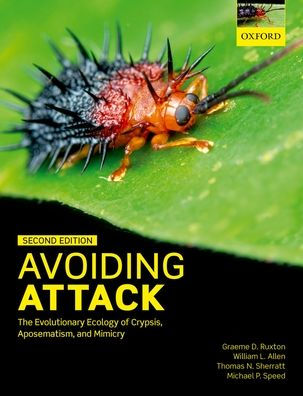5
1
9780199688685



Avoiding Attack: The Evolutionary Ecology of Crypsis, Aposematism, and Mimicry / Edition 2 available in Hardcover, Paperback

Avoiding Attack: The Evolutionary Ecology of Crypsis, Aposematism, and Mimicry / Edition 2
- ISBN-10:
- 0199688680
- ISBN-13:
- 9780199688685
- Pub. Date:
- 09/26/2018
- Publisher:
- Oxford University Press
- ISBN-10:
- 0199688680
- ISBN-13:
- 9780199688685
- Pub. Date:
- 09/26/2018
- Publisher:
- Oxford University Press

Avoiding Attack: The Evolutionary Ecology of Crypsis, Aposematism, and Mimicry / Edition 2
$71.0
Current price is , Original price is $71.0. You
71.0
In Stock

Product Details
| ISBN-13: | 9780199688685 |
|---|---|
| Publisher: | Oxford University Press |
| Publication date: | 09/26/2018 |
| Edition description: | Reprint |
| Pages: | 304 |
| Product dimensions: | 9.60(w) x 7.40(h) x 0.70(d) |
About the Author
From the B&N Reads Blog
